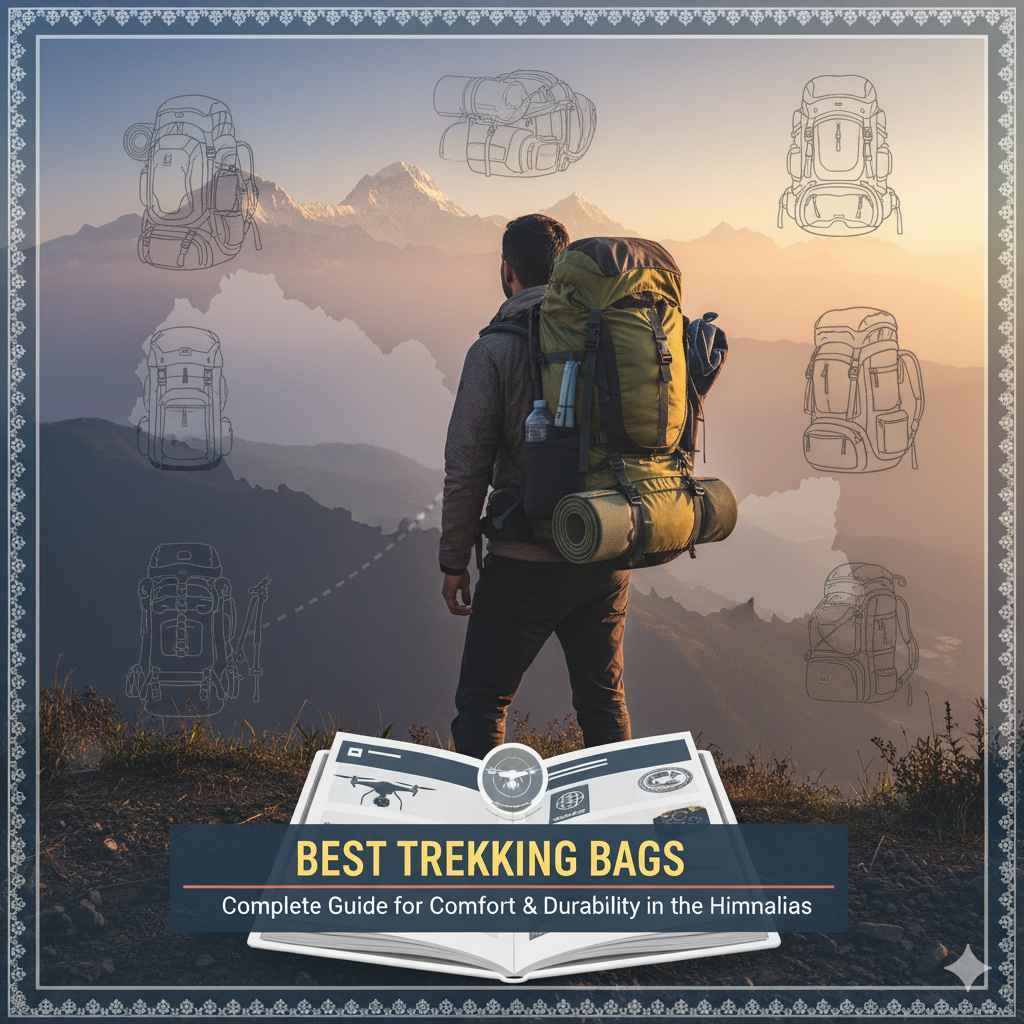
Best Trekking Bags for Trekking in Nepal
Trekking in Nepal is one of the most unforgettable experiences in the world. With towering Himalayan peaks, lush green valleys, cascading waterfalls, and rich local culture, it’s a paradise for adventure lovers. Whether you’re trekking to Everest Base Camp, exploring the Annapurna Circuit, or enjoying a serene trek in the Langtang Valley, having the Best Trekking Bags is crucial for a comfortable and safe journey.
Your trekking bag carries all your essentials from clothing and food to water, trekking gear, and personal items. Choosing the right bag can make the difference between an enjoyable adventure and a trek full of discomfort and fatigue.
In this complete beginner-friendly guide, we’ll cover:
Why choosing the right trekking bag is essential
Features to look for in the Best Trekking Bags
Recommended backpacks for different treks in Nepal
Packing tips for beginners
Maintenance and care for your trekking bag
Local brands and buying tips in Nepal
Why the Best Trekking Bags Matter
Your trekking bag is more than just a container for your belongings it’s your companion throughout your Nepal trek. The Best Trekking Bags:
Keep your load balanced and reduce fatigue
Protect your belongings from rain, dust, and snow
Provide easy access to water, snacks, and essential gear
Offer ergonomic support to reduce strain on shoulders, back, and hips
Using an ill-fitting bag can lead to sore shoulders, back pain, and even injuries, which can turn an amazing trek into a challenging and uncomfortable experience. Therefore, investing in the Best Trekking Bags ensures comfort, protection, and efficiency throughout your trek.
Key Features to Look for in the Best Trekking Bags
Before buying a trekking bag for Nepal, you should focus on these essential features to make sure it meets your trekking needs:
1. Capacity
The size of your trekking bag depends on the type and duration of your trek:
Day treks (1–2 days): 20–35 liters is enough for water, snacks, and a light jacket.
Short multi-day treks (3–7 days): 40–55 liters can accommodate extra clothing, sleeping bag, and food.
Extended treks (8+ days): 60–70 liters is ideal for longer expeditions where you carry heavier loads and extra gear.
Avoid overpacking, as heavier bags can strain your back and shoulders, especially on steep or uneven trails.
2. Comfort and Ergonomic Support
The Best Trekking Bags provide comfort through ergonomic design:
Padded shoulder straps reduce pressure on shoulders
Padded hip belts transfer weight to your hips instead of your back
Adjustable back panels allow a perfect fit for different body types
A well-fitted bag ensures that you can hike for hours without pain, even on demanding Himalayan trails.
3. Waterproofing and Weather Resistance
Nepal’s weather is unpredictable. Rain, snow, or stream crossings can make your trek uncomfortable if your bag isn’t protected.
Look for trekking bags with waterproof fabrics or include a rain cover
Internal compartments or dry bags can protect electronics, documents, and clothing
Carrying a waterproof bag or using waterproof covers is a hallmark of the Best Trekking Bags.
4. Durability
Nepalese trails can be rough rocky paths, muddy slopes, and river crossings test the durability of your bag. The Best Trekking Bags are made of:
Tear-resistant nylon or polyester
Reinforced stitching for high-stress points
Strong zippers and buckles that withstand heavy loads
A durable bag ensures your gear stays safe for multiple treks over the years.
5. Compartments and Accessibility
Organized packing is easier with a bag that has multiple compartments. Look for:
Main compartments for clothing and larger items
External mesh or zip pockets for water bottles, snacks, and trekking poles
Small internal pockets for valuables like wallets, passports, or cameras
A well-organized bag is a sign of the Best Trekking Bags for beginner and experienced trekkers alike.
6. Lightweight Design
A lightweight bag reduces fatigue during long treks. Modern trekking backpacks balance weight with durability, providing a comfortable experience even when fully loaded.
Top Recommended Best Trekking Bags for Nepal
Here are some trusted options for beginners and experienced trekkers:
1. Osprey Atmos AG 65
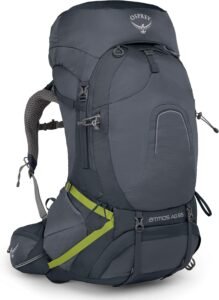
Osprey Atmos AG 65
Ideal for multi-day treks
Excellent ventilation and ergonomic support
Adjustable fit for comfort on long hikes
2. Deuter Aircontact Lite 50+10
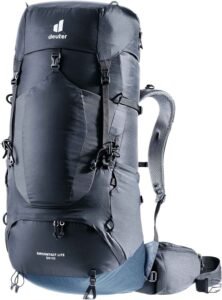
Deuter Aircontact Lite 50+10
Versatile capacity
Detachable lid and secure compartments
Durable for rugged trails
3. Gregory Baltoro 65
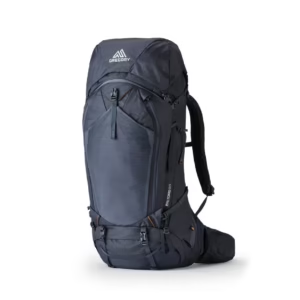
Gregory Baltoro 65
Perfect for long treks with heavy loads
Technical design with padded support
Excellent hip belt and shoulder strap system
4. REI Co-op Flash 55

REI Co-op Flash 55
Lightweight but spacious
Simple design for easy access
Suitable for moderate multi-day treks
5. Local Nepal Brands
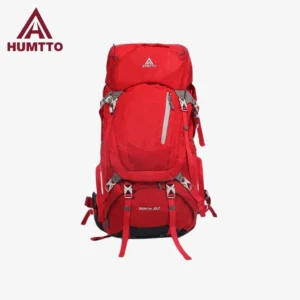
trekking bag brand in nepal – Humtto
Affordable and reliable
Lightweight and easy to find in Kathmandu or Pokhara
Great option for beginners on moderate treks
Each of these bags qualifies as one of the Best Trekking Bags in 2025 for Nepal, depending on the type of trek and personal preferences.
Packing Tips for the Best Trekking Bags
Proper packing is as important as choosing the right bag:
Distribute weight evenly: Place heavier items close to your back to maintain balance.
Use dry bags or packing cubes: Keeps clothing and gear organized and protected from moisture.
Carry essentials in a small daypack: Snacks, water, first-aid kit, and camera should be easily accessible.
Pack smart and light: Avoid overpacking; only take what you truly need.
Separate wet and dry items: Keep wet clothing or shoes in waterproof compartments.
Following these tips maximizes the comfort and effectiveness of your Best Trekking Bags.
Maintenance and Care
Always use a rain cover when trekking in wet conditions
Wipe off mud or dust with a damp cloth after each trek
Avoid machine washing to preserve the bag’s structure and durability
Store the bag in a dry, ventilated area
Check straps, zippers, and buckles before each trek
A well-maintained trekking bag lasts for years, making it a worthwhile investment for all your Nepal adventures.
Choosing the Right Bag for Your Trek Type
| Trek Type | Bag Capacity | Example Bag |
|---|---|---|
| Short day hikes | 20–35 L | Lightweight daypack |
| 3–7 day treks | 40–55 L | Osprey Atmos 50 |
| 8+ day treks | 60–70 L | Gregory Baltoro 65 |
Matching your bag to your trek type ensures comfort, safety, and efficiency. A properly sized bag helps you carry essentials without overloading, making your trek much more enjoyable.
If you’re planning your next Himalayan adventure and want custom trekking bags tailored to your comfort and trekking style, contact the ExploreAllAboutNepal team today! We can help you find or design the perfect trekking bags that match your needs, whether you’re heading to Everest Base Camp, Annapurna Circuit, or any scenic trail across Nepal.
Local Buying Tips in Nepal
If you are buying a trekking bag in Nepal:
Kathmandu (Thamel) and Pokhara (Lakeside) have stores selling both international and local brands
Always try the bag with weight to check comfort
Ask about rain covers or waterproof features
Check zippers and stitching for durability
Avoid second-hand bags for multi-day treks
Local Nepalese bags are often lightweight and affordable while offering good quality for beginners.
Investing in the Best Trekking Bags is essential for a safe and enjoyable Nepal trekking experience. A comfortable, durable, and waterproof bag protects your belongings, distributes weight properly, and keeps you energized on long treks.
Whether you’re exploring the famous trails of Everest Base Camp or enjoying a moderate trek in Annapurna or Langtang, choosing the right bag ensures a hassle-free adventure.
Take your time selecting a trekking bag that suits your body type, trek duration, and terrain. The Best Trekking Bags will become your most trusted companion on your Himalayan journey, keeping your gear safe and your back comfortable.
With the right bag, you can focus on the breathtaking landscapes, local culture, and adventure, rather than worrying about sore shoulders, wet clothes, or disorganized gear.

